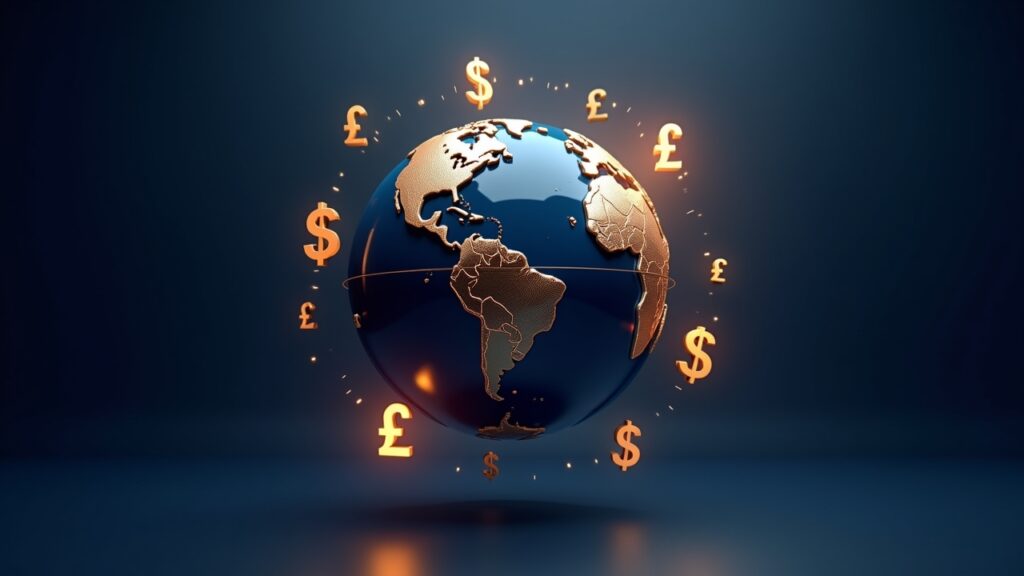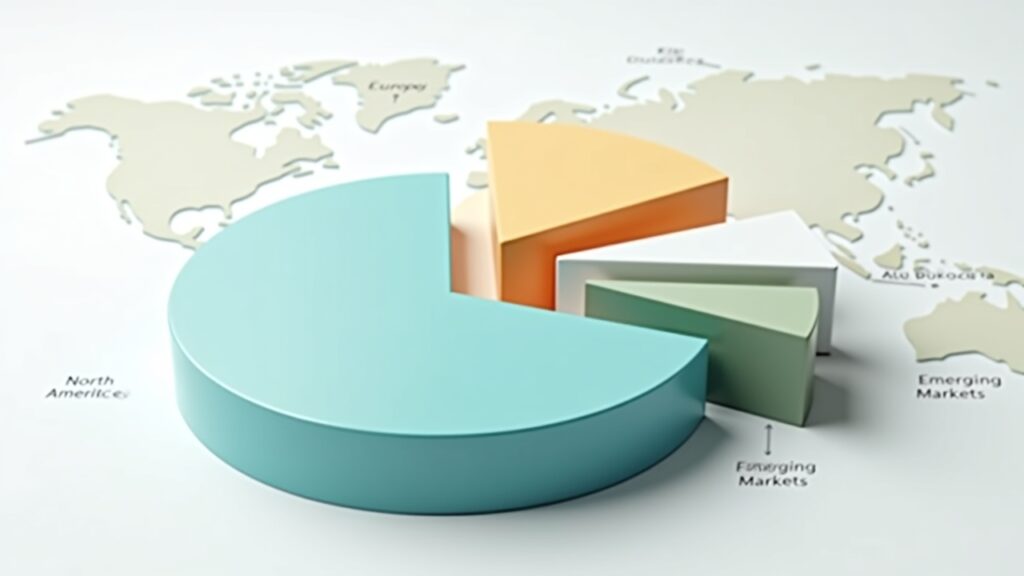Advertisements
Did you know that 95% of the world’s investment opportunities exist outside the United States? Yet most Americans keep nearly 80% of their portfolios invested domestically! I learned this the hard way when my all-American stock picks got crushed during the 2008 financial crisis. That’s when I discovered international diversification – and honestly, it’s been a game-changer for my investment strategy.
International diversification isn’t just fancy investment jargon. It’s your financial safety net against putting all your eggs in one country’s economic basket.
My Wake-Up Call: Why I Started Looking Beyond U.S. Borders

Back in 2007, I thought I was pretty smart. My portfolio was loaded with tech stocks, real estate investment trusts, and good ol’ American companies. Then the housing bubble burst, and my “diversified” portfolio tanked by 40%. Ouch!
That’s when my buddy Jake, who’d been investing in emerging markets for years, showed me his portfolio. While mine was bleeding red, his international holdings in Asia and Europe were actually holding steady. Some were even green! I felt like such a rookie.
The lightbulb moment hit me: geographic diversification could’ve saved me a ton of heartache. Different countries don’t always move in lockstep economically, which means when one region struggles, others might thrive.
What International Diversification Actually Means
International diversification is basically spreading your investments across different countries and regions instead of keeping everything in your home market. Think of it like having friends in different cities – when one friend’s having a rough time, you’ve got others to hang out with!
This strategy includes investing in developed markets like Europe and Japan, emerging markets such as China and India, and even frontier markets. Each region brings different economic cycles, currency movements, and growth opportunities to your portfolio.
The Benefits That Actually Matter (From Someone Who’s Been There)
Let me be real with you – international diversification isn’t a magic bullet. But here’s what it’s done for my portfolio over the years:
- Risk reduction: When U.S. markets had their mini-meltdown in 2018, my European and Asian holdings cushioned the blow significantly.
- Growth opportunities: I’ve captured some incredible growth in emerging markets that simply wasn’t available domestically. My Brazilian ETF returned 35% one year when the S&P 500 was flat.
- Currency diversification: This one’s tricky, but when the dollar weakens, foreign investments can actually boost your returns through currency appreciation.
However, I’ve learned the hard way that currency fluctuations can also work against you. In 2015, my European investments lost value when the euro tanked against the dollar, even though the underlying companies performed well.
How to Get Started Without Losing Your Shirt
Here’s my practical approach after years of trial and error. Start small – I recommend allocating about 20-30% of your portfolio to international investments initially.
The easiest way? International exchange-traded funds (ETFs). I personally love broad international funds like VTIAX or VEA for developed markets, and VWO for emerging markets exposure. These give you instant diversification without having to research individual foreign companies.
Don’t make my early mistake of trying to pick individual foreign stocks unless you really know what you’re doing. I once bought shares in a Japanese company based on a hot tip, only to discover later that I couldn’t even read their annual reports properly!
Common Pitfalls I’ve Stumbled Into
Let’s talk about the stuff nobody warns you about upfront. Political risk is real – I had money in Turkish stocks when their currency crisis hit in 2018, and it was brutal. Political instability can wipe out gains faster than you can say “emerging markets.”
Tax complications are another headache. Some countries withhold taxes on dividends, and navigating foreign tax treaties can be confusing. I learned to keep good records and consult a tax professional when things got complicated.
Also, don’t chase performance. I made this mistake in 2009 when everyone was talking about BRIC countries (Brazil, Russia, India, China). I poured money into these markets right before they cooled off significantly.
Building Your Global Strategy

Here’s my current allocation that’s worked well: about 60% U.S. investments, 25% developed international markets, and 15% emerging markets. This isn’t gospel – adjust based on your risk tolerance and age.
I rebalance annually, which means selling some winners and buying more of the underperformers. It feels weird selling your best-performing assets, but this disciplined approach has served me well over time.
Consider using target-date funds if you want a set-it-and-forget-it approach – many automatically include international exposure and rebalance for you.
Your Next Move in Building Wealth Globally
International diversification has transformed my investment approach from a risky, home-biased strategy to a more balanced, global perspective. Sure, it’s not always smooth sailing, and you’ll face unique challenges like currency risk and political uncertainty.
Remember, every investor’s situation is different, so customize this strategy to fit your goals and risk tolerance. The key is starting with small allocations and learning as you go, rather than jumping in headfirst like I did initially.
Most importantly, don’t let analysis paralysis keep you on the sidelines. The biggest risk might be missing out on the 95% of global opportunities that exist beyond our borders. Ready to explore more investment strategies and wealth-building tips? Check out our other articles at Plan Wealth for more insights on building your financial future!




[…] to dive deeper into smart financial planning? Check out more practical money management tips and investment strategies over at Plan Wealth – we’ve got plenty more articles to help you […]